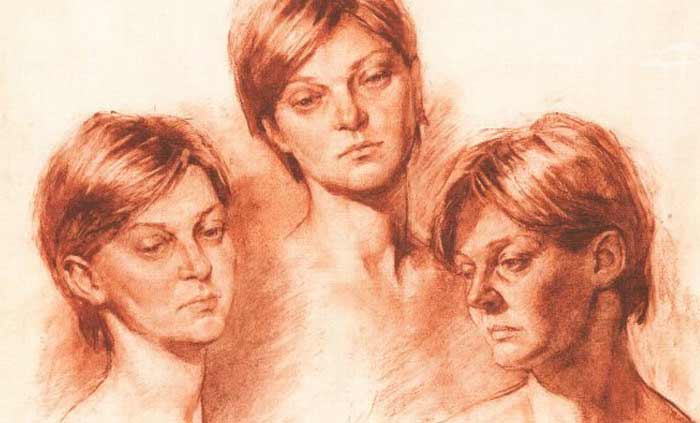Question from Ray, Drawing Academy graduate
My main interest is portrait and figurative work, and in a portrait, I normally draw then paint a three-quarter or seven-eighths size head. I’m currently using pencil measurement, but haven’t figured out how to scale up and make the drawing larger than what I measure at a distance (even 5 or 6 feet). That was never a problem with the copy machine method, I simply made a larger photograph. Of course that’s likely why I can’t figure out how to do so ‘in the round’.
Drawing Academy Tutors
Dear Ray,
Measuring sizes in pencil is all about relative proportions.
There are two ways to do it:
1. The Sight-size method, which is described here:
//drawingacademy.com/sight-size-drawing-method

2. Measuring relative sizes and angles:
//drawingacademy.com/how-to-measure-with-a-pencil
The first method is quite limited because you have to draw in the same size as you see the model. As you correctly pointed out, scaling up here is not easy. For some reason this method is very much in favor of art atelier-type schools.
The second method is much more flexible. Here’s how you can use it:
Take a pencil and measure some size on the model, let say the distance between the eye-line and the mouth-line. Using this size as a measuring unit, check on the model how many times it fits into another dimension (for example, a height or width of the head). It might be something like 3.5 times or whatever you come up with in your measurement.
When you know this proportion, apply it in your drawing. Check how many times the distance between the eye-line and the mouth fits into the height of the head on your artwork. Correct your artwork if required.



Needless to say, that actual size on the drawing will be greater than you marked on the pencil while measuring the model. We are interested in relative proportion here, not actual sizes. This way, it doesn’t matter how smaller or bigger your drawing is comparing to the model. All you need to take care of making sure proportions and angles are correct.
We hope this clarifies your doubts about how to scale.
Once again, we are very grateful for your kind words about the Drawing Academy course and wish you all creative success you deserve.
Enroll in the Drawing Academy Course
Pay once - Enjoy forever!
Only $297
![]() Kind regards,
Kind regards,
Natalie Richy and Vladimir London
Drawing Academy tutors






thanks for the advice, it is very helpful. i am sure practicing is the key to improvement once the way is shown.
Upscaling heads and features is easy, as long as you know the basics of the proportions and where they all fit.
I have learnt a lot in the Drawing Academy coarse and have found it much easier than tracing from photographs that have been enlarged.
I joined the course about 4 months ago and still on the first month videos, as I have been enjoying what I have learnt from the basics to the drawing of certain features and perspective.
I would recommend to everyone to invest in the Drawing Academy course and take as much time as you need before moving on to the next section. That way one gets the feel of becoming a fine artist and not a copier.
Thank you, Drawing Academy!